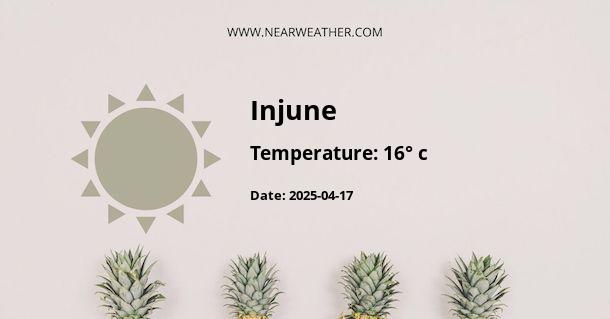Climate and Weather in Injune, Australia
Injune is a small town located in the Maranoa Region of Queensland, Australia. It is known for its beautiful natural landscapes and diverse wildlife. The climate in Injune is classified as semi-arid, with hot summers and mild winters. Understanding the weather patterns and climate of Injune is essential for residents, visitors, and those planning outdoor activities in the area.
Temperature
The temperature in Injune varies throughout the year, with distinct seasons. Summers, which span from December to February, are characterized by hot and dry conditions. The average maximum temperature during this period ranges from 30°C (86°F) to 36°C (97°F). It is not uncommon for temperatures to exceed 40°C (104°F) during heatwaves.
Winter in Injune, from June to August, brings milder temperatures. The average maximum temperature during this time ranges from 17°C (63°F) to 22°C (72°F). Winter nights can be chilly, with temperatures dropping to an average minimum of 3°C (37°F). Frost can occasionally occur during the coldest months.
Spring (September to November) and autumn (March to May) are transitional seasons in Injune. These seasons experience more moderate temperatures, with an average maximum ranging from 23°C (73°F) to 29°C (84°F).
Rainfall
Injune experiences a distinct wet and dry season. The wet season typically occurs between November and March, with the highest rainfall recorded in January and February. During this period, Injune receives an average monthly rainfall of 70-100 mm (2.8-3.9 inches).
The dry season, which spans from April to October, is characterized by lower rainfall. Injune receives an average monthly rainfall of 10-30 mm (0.4-1.2 inches) during this period. However, it is important to note that rainfall can vary significantly from year to year, and extended periods of drought are not uncommon in the region.
Sunshine Hours
Injune enjoys a high number of sunshine hours throughout the year, making it an ideal destination for outdoor activities. On average, the town experiences around 9-10 hours of sunshine per day. The sunniest months are typically October and November, with an average of 10 hours of sunshine per day. The winter months of June and July have slightly fewer sunshine hours, with an average of 8-9 hours per day.
Wind
The wind in Injune is generally light to moderate, with occasional stronger gusts during thunderstorms. The prevailing wind direction is from the southeast, particularly during the summer months. However, wind patterns can vary, and it is important to check weather forecasts for the most up-to-date information.
Extreme Weather Events
Like many areas in Queensland, Injune is prone to extreme weather events such as thunderstorms, hailstorms, and occasional bushfires. Thunderstorms can occur during the summer months and can bring heavy rainfall, strong winds, and lightning. It is important to stay informed about weather warnings and take necessary precautions during these events.
Conclusion
Injune, Australia, experiences a semi-arid climate with hot summers and mild winters. Understanding the climate and weather patterns in Injune is crucial for residents, visitors, and those planning outdoor activities in the area. The town experiences distinct wet and dry seasons, with the wettest months typically occurring between November and March. Injune enjoys a high number of sunshine hours throughout the year, providing ample opportunity for outdoor exploration and activities. It is important to stay informed about extreme weather events and follow local authorities' advice to ensure safety and enjoyment while in Injune.
A - Injune's Latitude is -25.850000 & Longitude is 148.566666.
A - Weather in Injune is 16° today.
A - Climate Conditions in Injune shows clear sky today.
A - Humidity in Injune is 65% today.
A - Wind speed in Injune is 6.91 km/h, flowing at 220° wind direction. today.
